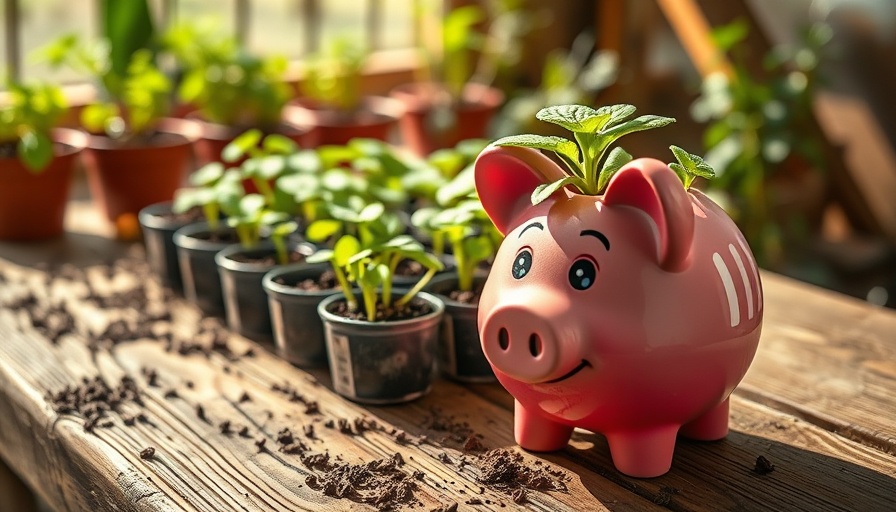
Affordable Seed Starting: A Garden Dream Within Reach
Starting your garden from seeds is not just an enriching experience; it also saves you money! Gardening enthusiasts across the spectrum are increasingly realizing the benefits of seed starting, especially when it comes to creating a mesmerizing garden design filled with flowers and vegetables. However, many believe that diving into seed starting requires costly equipment, which isn't the case. With creativity and some thriftiness, you can delight in a blossoming garden without breaking the bank.
Why Start Seeds Indoors?
There are numerous reasons to start seeds indoors, and understanding these can help plan your back or herb garden properly. For many gardeners, the most significant benefit is that it allows you to extend the growing season. By sowing seeds indoors, you give them a head start before they’re planted outside after the last frost date. This is particularly vital for crops that demand longer growing periods, such as tomatoes and peppers. Not only does seed starting offer you a variety of choices that may not be available at local nurseries, but it also adds a personal touch to your garden with plants that you have nurtured from the very beginning.
Budget-Friendly Seed Starting Essentials
Creating a budget-friendly seed-starting setup is easier than you might think! You need to gather a few essential supplies:
- Trays and Containers: You can use anything from old yogurt cups to egg cartons for planting. Recycled containers work just as well as store-bought ones.
- Seed-Starting Mix: While it may be tempting to grab soil from the garden, it’s best to opt for a seed starting mix to ensure a cleaner, pathogen-free environment.
- Lighting: Adequate lighting is crucial for the healthy growth of your seedlings. While grow lights are a popular choice, standard fluorescent bulbs can also suffice without the hefty price tag.
Choosing the Right Soil for Seed Starting
The soil you choose can significantly impact your seedlings’ growth. Many gardeners recommend using a fine organic potting soil because it provides nutrients that young plants need without overwhelming them. Avoid general garden soil since it may harbor pests that can threaten your seedlings. Using local garden supplies is a great way to keep costs low while ensuring quality.
Watering and Seeds: The Fundamentals
When it comes to watering, be gentle and ensure that you are moistening the soil rather than drenching the seedlings directly. Applying water from below can help encourage strong roots while avoiding fungal diseases. Seeds are the heart of your gardening adventure. Consider looking for deals online or at local garden centers to get high-quality seeds at an affordable rate.
Timing: When to Start Your Seeds
Knowing exactly when to start your seeds based on the last frost date in your area takes your gardening game to the next level. It allows you to maximize the growing potential of your plants. Using a gardening planner or accessing planting calendars online can help streamline this process.
Transforming Your Seeds into Thriving Plants
Once your seeds have sprouted, transitioning them outdoors requires a process called 'hardening off,' which helps acclimatize your plants to the outdoor conditions gradually. This ensures their best chance of survival and booming growth.
Gardening Tips for Beginners
For those new to this exciting hobby, embracing patience and observing your plants closely will yield fruitful results. Don't be afraid to try different methods and containers, as they can lead to inspirational gardening ideas that suit your personal taste.
Conclusion: Your Green Thumb Awaits!
In conclusion, starting seeds on a budget is entirely possible, and the satisfaction you gain from nurturing your plants is invaluable. Embrace the joys of gardening and enjoy the process of watching life bloom! Explore your local gardening shops for resources and supplies, and consider joining community gardening classes for additional support and inspiration. Your backyard can transform into a vibrant garden of flowers, vegetables, and herbs that you cultivated from the ground up—an experience that nourishes both the body and spirit!
 Add Row
Add Row  Add
Add 




Write A Comment